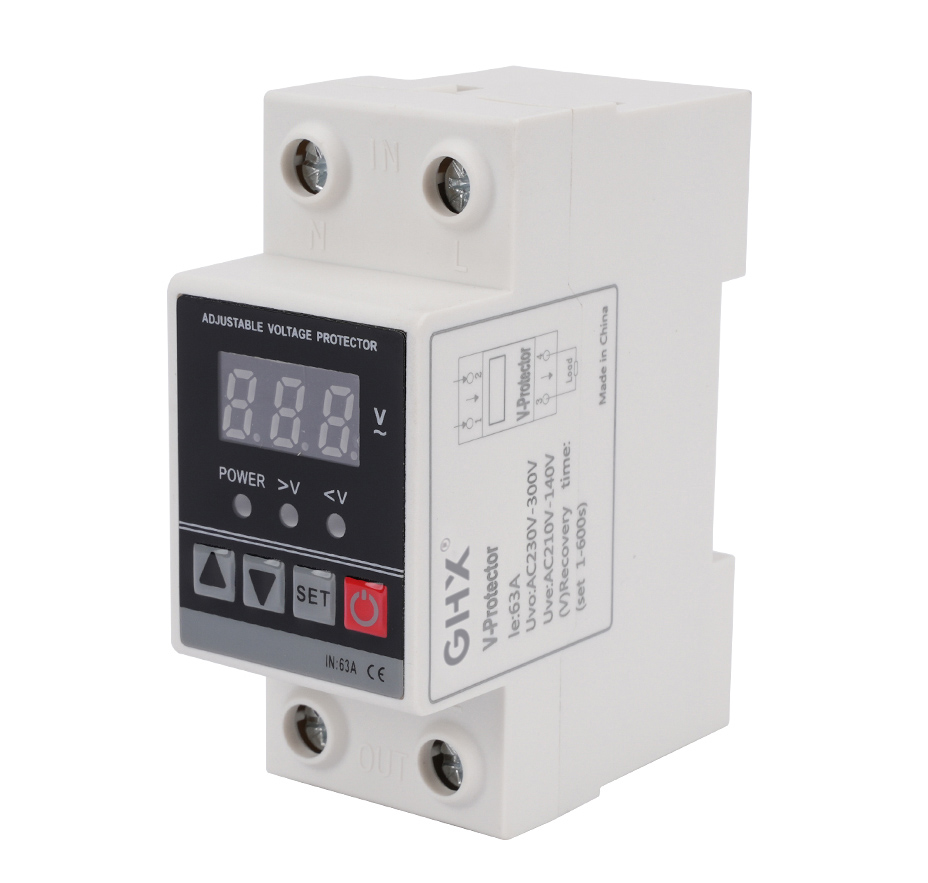Key aspects and methods of voltage protection
2023-10-18
Voltage protection, also known as overvoltage protection or surge protection, refers to the measures and devices used to safeguard electrical and electronic equipment from voltage levels that exceed the designated or safe operating range. Overvoltages can occur due to various reasons, including lightning strikes, switching operations, and faults in the electrical grid, and they can damage or degrade sensitive equipment. Voltage protection helps prevent such damage and ensures the reliable operation of electrical systems and devices.
Here are some key aspects and methods of voltage protection:
1. Surge Protection Devices (SPDs): Surge protection devices, such as surge suppressors or lightning arresters, are designed to divert excess voltage from transient surges, including those caused by lightning strikes or switching events, away from connected equipment. They typically operate by clamping the voltage to a safe level or by redirecting the surge to ground.
2. Voltage Regulators: Voltage regulators maintain a stable output voltage within a specified range, regardless of fluctuations in the input voltage. They are commonly used to protect sensitive electronic equipment, such as computers and medical devices, from voltage variations.
3. Uninterruptible Power Supplies (UPS): UPS systems provide backup power during voltage sags, outages, or disruptions. They not only protect against under-voltage conditions but also against overvoltage events by switching to battery power or regulating the output voltage.
4. Isolation Transformers: Isolation transformers electrically isolate the input and output voltage, preventing voltage spikes and surges from reaching connected equipment. They are often used in sensitive applications where electrical isolation is critical.
5. Fuse and Circuit Breaker Protection: Fuses and circuit breakers provide overcurrent protection, which indirectly helps protect against overvoltage conditions. In cases of severe overcurrent, they can interrupt the circuit to prevent equipment damage.
6. Voltage Monitoring: Voltage monitoring and measurement equipment can continuously monitor the voltage levels in an electrical system. When voltage levels exceed predefined thresholds, alarms can be triggered to alert operators to potential issues.
7. Grounding and Earthing: Proper grounding and earthing systems are essential for dissipating excess voltage and providing a safe path for electrical surges to reach ground. Grounding and earthing systems are critical components of overall electrical safety.
8. Transient Voltage Suppressors: Transient voltage suppressors (TVS) are semiconductor devices designed to clamp and dissipate transient voltage spikes. They are often used to protect sensitive electronic components like microprocessors and integrated circuits.
9. Voltage Limiters: Voltage limiters are devices that limit the voltage supplied to equipment to a preset level. They can be used to protect equipment with lower voltage ratings from being exposed to excessive voltage.
10. Power Quality Analysis: Power quality analysis involves monitoring and analyzing the quality of the electrical supply, including voltage variations, harmonics, and disturbances. This analysis can help identify potential overvoltage events and their causes.
Voltage protection measures are particularly crucial in industries and applications where equipment and systems are sensitive to voltage fluctuations and where downtime or damage from overvoltage events can have significant consequences. Properly implemented voltage protection strategies help maintain the integrity and reliability of electrical and electronic systems, extend the lifespan of equipment, and minimize the risk of costly downtime.



